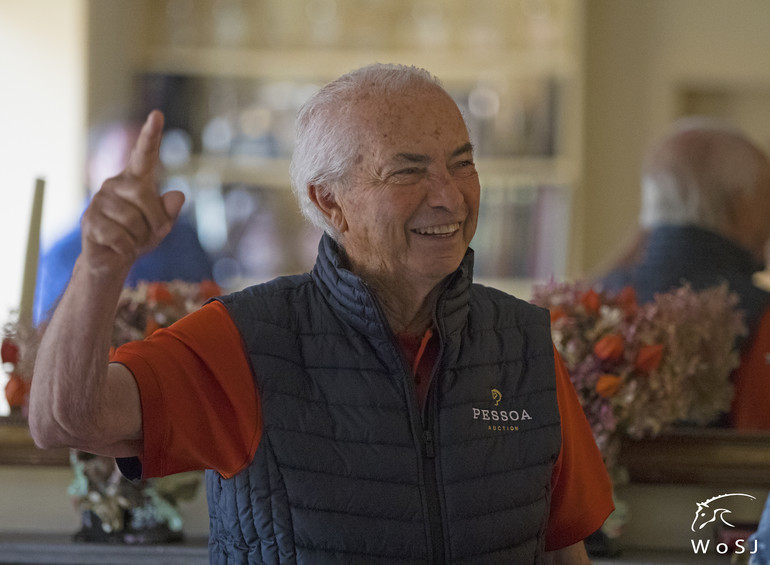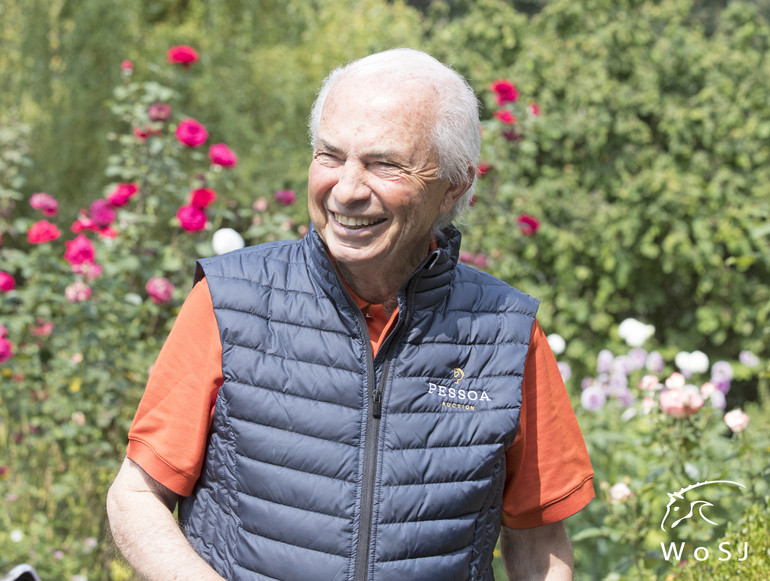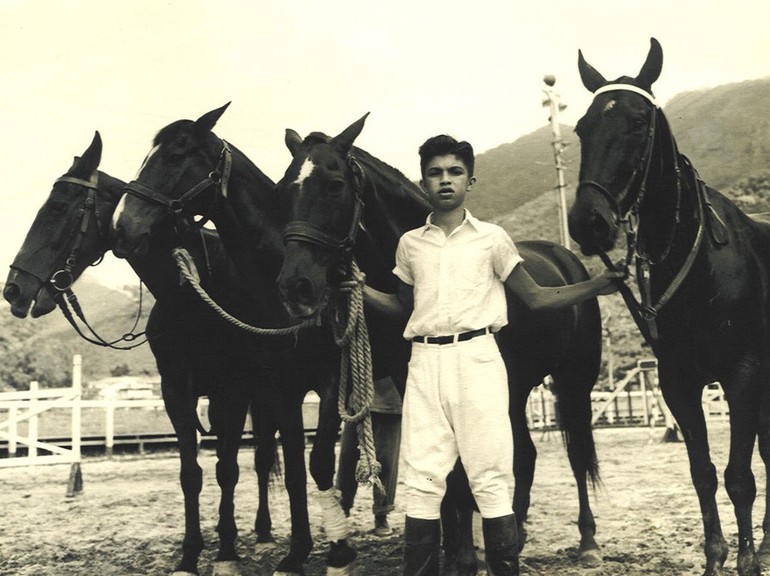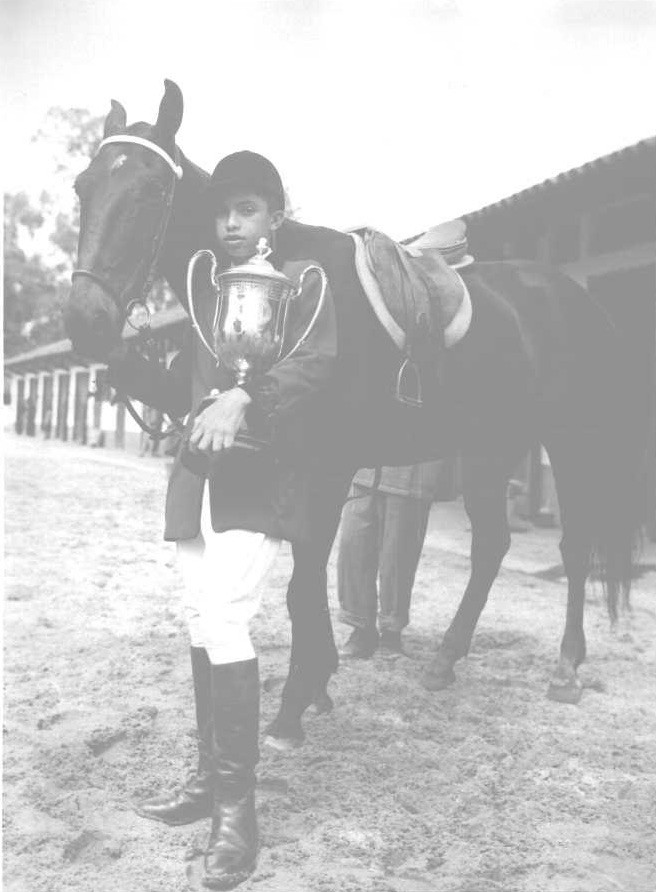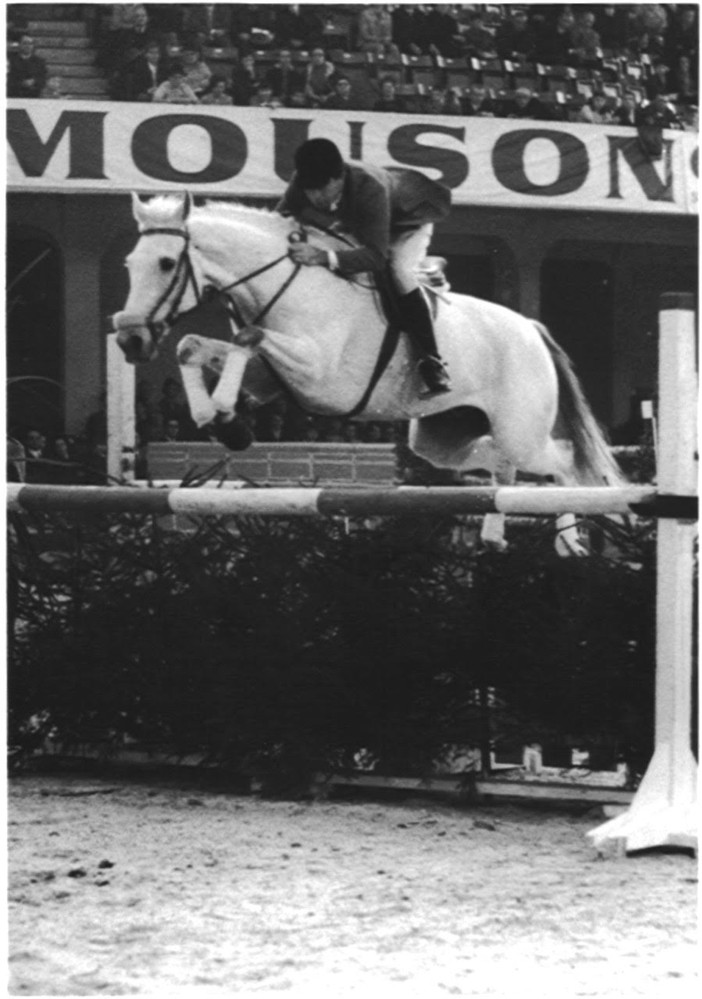Text © World of Showjumping
He’s soon 85 but shows no signs of slowing down. In August, he launched the Pessoa Auction and when this project reached its conclusion back in September there were other ones waiting. After somewhat reluctantly finding new homes for his beloved horses, Nelson ‘Neco’ Pessoa is ready to turn his full attention to coaching – with plans of innovative ways to make sure his legacy lives on. With the Olympic Games in Tokyo also on his agenda for 2021, as High-Performance Jumping Coach for the Australian eventing team, there is very little in Neco’s life suggesting that he is approaching his mid-eighties.
Divided over three chapters, Neco – also known as The Wizard – takes us with on his life journey and shares his experiences from an equestrian adventure that began just after World War II and which continues to this day.
You never stop learning…
“This chance, this privilege to work with the Australian eventing team…,” Neco begins when talking about his position as a specialist coach for the Aussie squad in the lead-up to the Olympic Games in Tokyo. “The Australian eventers are real horse people, and people like them don’t really exist anymore. They are old-fashioned Anglo-Saxons. How much I have learned with them, it’s unbelievable! In the morning, they all polish their boots like trophies. I love that! I hate chaps and mini-chaps, I would never want to be seen on a horse with mini-chaps,” he says while shaking his head.
“The Australian eventing riders are perfectionists, both in their dressage and in their horse-care. Again, there is an Anglo-Saxon approach to their horse care and that’s how I learned it too – in England with Ted Williams. He was unbelievable; I remember how he taught me to cook my own mash in a special machine. We added different grains, oils, salt. Now, you get it ready in a bag….” Neco shrugs.
“I think I’m a good match with the Australians, because when it comes to the horses, I’m a maniac. To the horse, you need to talk horse. You need to take excellent care, be a perfectionist,” Neco says – expressing his admiration for eventers Andrew Hoy and Chris Burton, who he says would rather live in their truck than in a hotel to be closer to their horses when they are away from home.
“For me, being a good horseman includes looking at the entire horse – from the teeth to the hind feet,” Neco says. “Make sure that you have a good blacksmith, a good vet and treat the horses like athletes in this regard. On the other hand, remember that they are animals. It is important to give the horses proper rest and space: Let them go in the field for a few hours every day. I cannot see horses that don’t go to the field, it is not healthy. I am a big believer in turning the horses out.”
From the feet of Cristo Redentor to the shores of Lac Léman
That Neco ended up as a perfectionist comes as no surprise when hearing him tell about his childhood. “To have good style and learn the correct way of riding was instilled in me at an early age,” Neco tells while showing us a photo of himself when he was 5, jumping without stirrups in perfect position. “My father was very severe with it. I remember sending him some photos by post from a competition that I had won, and he replied: ‘Please don’t send this piece of s… anymore!’” Neco laughs, shaking his head over his father’s high demands.
All the way until the age of 12, Neco was scared when he was riding. Eventually he managed to overcome his fear and began competing. “My fear was quickly replaced with passion,” he recalls. “The Club in Rio where I started to ride was beautiful, at the border of the lake and at the feet of the Cristo. It was unbelievable, with big floodlit arenas and three indoors – just wonderful.”
“After the war, Chile had one of the best teams in the world,” Neco continues. “The Chileans broke the world record in 1949, when Captain Alberto Larraguibel and his horse Huaso jumped the highest fence in history – set at 2.47m. They were very famous back then and went everywhere in the world. Hence, when I was 14, my father sent me to Chile to learn as the riders there were considered to have good style and perfect position. However, when it came to dressage, the Chileans were not the strongest… They had one theory: The horse should not trot. The dressage was not really dressage. They took the horse from the stable, walked and then galloped. Not one step of trot. But at the Olympic Games, they won medals. That was the mentality back then.”
At the age of 18, in an era where the army riders dominated the sport in Brazil, Neco was already one of the best civilians and was selected for the national team. “I was young, but very competitive against the riders from the army – all the way up to 1.50m level. My father found the horses for me, he had a good eye,” Neco tells. “The Brazilian army riders had already finished fourth at the Olympic Games in 1952 so it was a big honour when I in 1953 was selected for the team that was going to Argentina to compete. There I won the Grand Prix in Mar del Plata and ended as one of the best riders of the show.”
Three years later in Stockholm, at the age of 20, Neco competed at his first Olympic Games and finished as the best Brazilian rider. “From Stockholm, we went on to jump in Aachen, London and Dublin. By surprise, we won the Nations Cup in Aachen which was a bit of a headache for the organisers that neither had a Brazilian flag nor knew our anthem,” he laughs. “When I went back to Brazil, I was full of dreams. I had seen Hans Günter Winkler, Raimondo D’Inzeo and Piero D’Inzeo... In 1957, the government sent a team back to Europe to compete and I was selected again. We began in Portugal, went on to Spain, France, Belgium, Germany, England and Ireland and had a lot of success. In 1959, we went to America and did the Pan American Games in Chicago, then New York, Washington, Harrisburg as well as Toronto in Canada. Once I returned to Brazil, I knew I wanted to base myself in Europe to become a professional. Luckily, an opportunity arose as a French lady that was living in Brazil invited me to go with her to Europe and train her there. I did not have to be asked twice. However, I was engaged to Regina, so we had to organise our wedding on short notice before we left. We married on December 19 1960, and on January 5 I was on the boat to Europe with the horses and my wife – who was not really into equestrian sport at all. My family thought it was all a little crazy! I had no financial support from my father; I had three siblings, so he did not have the money to keep one of his sons jumping in Europe. Hence, I came to Europe by myself with the promise to train the French lady that had a stable close to the shores of Lac Léman.
No sand in sight
“After two weeks on the boat, we arrived in Europe,” Neco continues. “This was a common way to travel the horses back then. I remember once when we were going to Portugal and got stuck in a port in Madeira – the trip would normally last two weeks but ended up taking nearly a month. When at sea, the horses were on small pallets on wooden floors and could not have straw because there was nowhere to dispose it,” Neco tells. “When we flew to the Olympics in Stockholm in 1956, the trip from Brazil took us 95 hours and we had to make stops in Recife in the north of Brazil, Dakar, Paris and Copenhagen to fill up. If the travel went by train, we walked the horses from the station to the show. It was certainly a different way of travelling than today.”
“Anyway, arriving at the beautiful 300-hectare farm in Geneva – which now is the location of the Golf Club of Geneva – I discovered there was not one square meter with sand to exercise the horses on,” Neco laughs. “And if one of my horses made a footprint in the fields, the keeper of the estate would come after me! I arrived in January and my first show was in March in Dortmund, and in between I had no indoor or outdoor for training. Eventually, we managed to solve it so that once or twice a week we put the horses on a lorry to go and train in an indoor riding school close by. We had one-and-a-half hours during lunch, when the public was out eating, to give the horses a few jumps. This was how I did it for ten years!”
“Having grown up in Copacabana, in an apartment overlooking the beach, the contrasts were huge,” Neco tells about his first year in Europe. “In Brazil everything was so free and relaxed, anything was possible, while in Switzerland it was all about discipline and rules. Luckily, I was raised by my father to become a disciplined person – like I said, he was very strict – so I managed to adapt quickly.”
“Leaving my entire family behind was not easy. However, my siblings and I remain close to this day,” Neco says.
“When I arrived in Europe in 1961, I soon realised I would not survive without learning proper dressage. Through my German friend Rosemarie Springer, I got the help I needed to improve,” Neco tells. “From Brazil, I had brought with me a thoroughbred mare called Granfina to practice dressage with. She was a terrible jumper, but a great dressage teacher.”
“Over the years, my dressage work became my strongest point,” Neco – today known as The King of Dressage for Show Jumpers – says. “I was, and still am, very into dressage. I even competed with Baloubet du Rouet when he was younger. Today, the dressage work that jumpers do is more universal than it was back then. A big evolution has taken place. The majority of the riders today are very serious with the flatwork and dedicate 80-90% of their time to it. Unless you are a genius in the ring, which very few are, you have to take the dressage work seriously.”
To be continued with a second and third part...
No reproduction withouth permission, copyright © World of Showjumping



